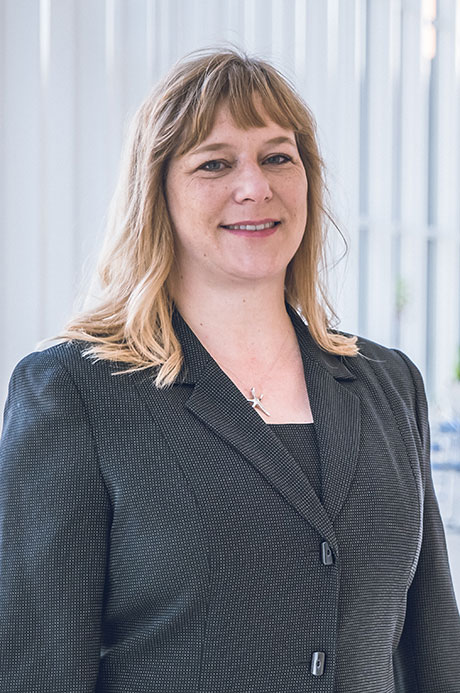

- Home
- About Us
-
Employment
- Technical Work
- USSP
- Reference Documents
-
Travel
Meet the People of IAEA Safeguards
The International Atomic Energy Agency has a world-class, diverse and multi-disciplinary workforce. With more than 2,500 staff working in a wide range of nuclear and related disciplines, it draws on their expertise to ensure the peaceful use of nuclear material and application of nuclear techniques for sustainable development. Here's a profile of one the safeguards professionals hired through the the International Safeguards Project Office.
Interview with Amy Larson
How did you end up at the IAEA? What were you doing before you joined the IAEA?
Before joining the IAEA, I'd been working at Los Alamos National Laboratory for more than 25 years in signal/image processing for nonproliferation, as well as computer science. I was looking for a change-of-station opportunity to broaden my experience. At Los Alamos National Lab, I was the deputy group leader for Information Sciences, and was doing machine learning (ML) and computer vision projects, and co-leading a ML summer school.
How did you learn about your current position?
I received an email in the daily laboratory announcements for an IAEA posting that involved satellite imagery processing, which was the area of my doctoral research. The position seemed like a good fit for my background and a unique opportunity.
What have you learned about yourself while working at this capacity?
Coming from a scientific lab, I often took for granted the similar backgrounds and perspectives of my scientist colleagues. At the IAEA, the diversity of working backgrounds is much greater, so I've had to learn how to effectively communicate technical issues with many different stakeholders and consider the broader impact of the work I do. International organizations are complex, and decisions must be made while considering all legal, diplomatic, and scientific issues at hand.
How will working at the IAEA enhance your career?
I've had the privilege to work with many experienced colleagues from around the world, and I have a better understanding of analysis work for safeguards at the IAEA. My experience here is directly aligned with the mission of Los Alamos, and I hope to contribute to better ties between Los Alamos and international organizations, including the IAEA.
What is your favorite thing about your current work at the IAEA?
My daily work has a lot of variety, and I have the freedom to experiment with different approaches to problems. It feels good to contribute to an important international mission and to be a technical resource for my team. Satellite imagery collection, dissemination, and analysis are currently undergoing many advances in industry, so it is fun to track the progress and new challenges of this field.
What is it like living and working in Vienna?
Vienna is a fantastic place to live. It's different living in a city and in a much smaller apartment than my suburban house back home, but I'm enjoying the art, culture, food, and travel experiences. It's possible to visit a new country every month because you can get almost anywhere in Europe in under five hours by train or plane. For a travel bug like me, that access has been a major perk of my change of station. The metro here is amazing, and I enjoy not having a car.
What would you say to those who are hesitant to apply?
It's definitely worth it. There are a lot of logistical issues to solve with phones, mail, rentals, taxes, and so on, but Vienna is a very modern city and you can find everything you need here. English is spoken fairly widely, and it's not too difficult to learn a bit of German. The IAEA is located in the Vienna International Centre, which has many resources for employees, including doctors, banks, groceries, and mail.

Amy Larson
Cost Free Expert
Image Scientist and Technical Expert
Division of Information Management


